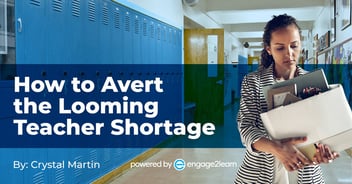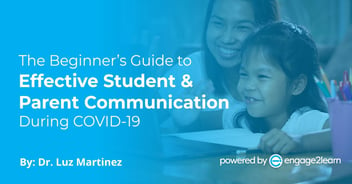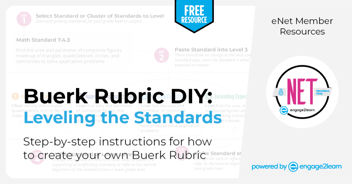Using the School Design Framework as the One Thing | engage2learn
by Robyn Scott
Is this just one MORE thing or the ONE thing?
It’s no secret classroom teachers feel overwhelmed, frustrated, and exhausted by their daily workload. I remember how excited and naive I was about becoming a teacher. I couldn’t wait to get the keys to my picture perfect classroom. I knew that I loved kids, and the thought of working nine months out of the year and leaving each day at 4 p.m. seemed appealing to me. I was sure that teaching would be less complicated than the erratic hours that I was living as a college student.
Fast forward a few weeks into my teaching career. I found myself staying up late at night grading papers, planning lessons on the weekends, feeling emotionally distraught over my students’ personal lives, and trying to balance my own family. My planning periods were booked solid with parent conferences, student conferences, RtI meetings, grade level meetings, PLC’s, and anything else that could possibly be squeezed in. Actually getting to plan during my planning period almost never happened. Can anyone else relate? It didn’t take long for me to realize that there must be a way to work smarter, not harder, otherwise, my teaching career might not last much longer.
So, how can teachers implement the district’s new framework without drowning in the current initiatives?
Why the District Framework?
Districts work diligently to design a framework based on Best Practices and Life Ready Skills to ensure learners are prepared for their future in the 21st century. The investment of time and resources in developing a framework necessitates the expectation for educators to be intentional about implementing the Best Practices within the framework. And, the best part is that e2L provides individual coaching to help teachers set goals and grow in each Best Practice, because we know that we’re better together. At e2L we understand that great minds think differently, so during coaching conversations, we discover the best solutions together. There isn’t a cookie cutter formula, because each classroom is unique.
At e2L we understand that great minds think differently, so during coaching conversations, we discover the best solutions together. Click To TweetWhat are the Best Practices?
Best Practices are a research-based and e2L curated list of instructional strategies that lead to student growth in academics and Life Ready Skills. And guess what? You are likely implementing most or all of these Best Practices at some level in your classroom! The implementation of a district framework and e2L coaching allows you to improve your current practice by building on your strengths. Let’s take a look at the list of Best Practices and how they tie into current district initiatives. Self-assessment reflection questions are provided to allow you to analyze what you are currently implementing.
Assessment/Formative Feedback:
- Which assessment pieces are you using to monitor student progress?
- How are you purposefully planning your instruction for each student?
- Are you giving students feedback on their growth?
- What formats are students provided to self-assess on academic and Life Ready skills?
Collaboration:
- What structures in your classroom arrangement support student collaboration?
- Do you spend more time direct teaching or facilitating?
- Which roles have students been assigned within their team or group to increase engagement?
- Do all students have a role such as a team leader, materials manager, timekeeper, technology specialist, or communicator?
Communication:
- Do you encourage communication in a variety of forms including written, verbal, nonverbal, digital, and listening communication opportunities?
- How often are you asking open-ended, higher-order questioning?
- What opportunities are you giving students to listen and value the opinions and beliefs of others?
Culture/Environment/Professional Ethics:
- How are you utilizing technology in your classroom?
- Which digital programs is your district utilizing?
- Do you believe that students should have a choice and voice in their educational experience? How are you providing those opportunities?
Critical Analysis/ Inquiry/ Research:
- How does your curriculum offer opportunities for research and inquiry?
- Are students asked to justify their decisions through research?
- Is curiosity supported in the learning environment?
Differentiation/Scaffolding:
- Which assessment data are you using to identify the different levels of learners?
- What are some resources that you offer to scaffold for each level of learning?
- How often do you hold small groups or workshops?
- Is Balanced Literacy or Guided Math a part of your classroom experience?
Goal Setting/Autonomy/Entrepreneurship:
- How often are students setting goals and tracking their progress?
- In what ways do you celebrate and recognize growth?
- Do students have the opportunity to create a learning plan?
Problem Solving/Creativity/Innovation:
- Are you allowing students to create and iterate solutions to problems?
Reflection/Growth Mindset:
- How are students encouraged to take risks in your classroom?
- Are there opportunities for self-reflection?
Relevance/Authenticity:
- Do you provide authentic lessons that are relatable for your students?
- Are audiences available to provide feedback to your students?
Small Group Instruction:
- Is differentiated small group instruction a regular part of your classroom?
- How do you identify small group needs?
Standards Alignment:
- Do you create lessons based on conceptually clustered standards that are challenging and relevant?
- Does your district curriculum cluster standards?
- Have you designed rubrics that are scaffolded for each level of thinking?
Work Smarter!
At e2L, we believe in elegant innovation through simplification. Finding the connections between your current classroom practice, existing district programs, and your district framework through the Best Practices is the key to keeping it simple and making the district framework the ONE thing rather than one MORE thing. It won’t be long before you find yourself working smarter, not harder. You’ve got this!



